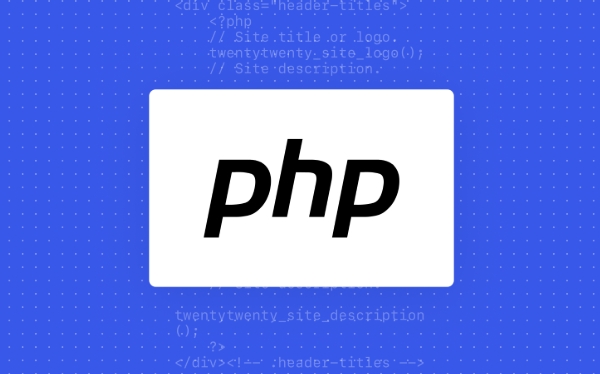Function calls in a finally block always execute after try and catch blocks, regardless of return or exceptions. For example, if a try block has a return, the finally block still runs. Functions in finally cannot alter the return value unless they use return, in which case they override prior returns. Performance-wise, function calls in finally are not slower, but heavy operations should be avoided. Best practices include: 1) keeping logic simple, 2) avoiding exceptions in finally to prevent error masking, 3) using return cautiously as it overrides earlier returns, 4) reserving finally for essential cleanup like closing files or connections, and 5) ensuring helper functions do not throw exceptions or rely on already released resources.

PHP handles function calls in a finally block just like any other code within that block — they will execute regardless of whether an exception was thrown, caught, or even if the function returns early. This behavior makes finally useful for cleanup tasks that must always run.

What happens to function calls in a finally block?
When you call a function inside a finally block, it runs after the try and catch blocks are done, no matter what. Even if there's a return statement in the try or catch block, the finally block still executes before the function actually returns.

For example:
function demo() {
try {
echo "In try block\n";
return;
} catch (Exception $e) {
// Not reached here
} finally {
echo "In finally block\n";
}
}Calling demo() will output:

In try block In finally block
So yes, the function call (or in this case, the echo statements) inside the finally block runs even though the try block has a return.
Can functions in finally affect return values?
No, functions called in the finally block cannot change the return value of the function unless they themselves use return. If you have a return inside the finally block, it will override any previous return value from the try or catch.
Here’s how that looks:
function testReturn() {
try {
return 'from try';
} finally {
return 'from finally';
}
}Calling testReturn() will return 'from finally'.
This is important to be aware of: using a return inside finally can unintentionally override expected behavior.
Are there performance concerns?
Function calls inside a finally block are not inherently slower than elsewhere, but since finally always runs, you should avoid putting heavy operations there unless absolutely necessary. For example, don’t do complex database calls or file operations unless you really need to clean up resources.
Instead, keep the finally block lightweight. Typical usage includes:
- Closing file handles
- Ending database connections
- Releasing locks
These are usually fast operations and fit well with finally.
Practical tips when using function calls in finally
- Keep logic simple unless cleanup requires more work.
- Avoid throwing exceptions in
finally, as it can mask earlier errors. - Be cautious with
returninfinally— it overrides everything else. - Use
finallymainly for predictable, essential cleanup steps.
If you're calling helper functions in finally, make sure they don't throw exceptions or depend on state that might already be gone.
Basically, PHP treats function calls in finally just like any other line of code in that block — they always run, unless the script is terminated abruptly (like via exit() or a fatal error). So yes, they work as expected, but with a few gotchas to watch out for.
The above is the detailed content of How does PHP handle function calls in a finally block?. For more information, please follow other related articles on the PHP Chinese website!

Hot AI Tools

Undress AI Tool
Undress images for free

Undresser.AI Undress
AI-powered app for creating realistic nude photos

AI Clothes Remover
Online AI tool for removing clothes from photos.

Clothoff.io
AI clothes remover

Video Face Swap
Swap faces in any video effortlessly with our completely free AI face swap tool!

Hot Article

Hot Tools

Notepad++7.3.1
Easy-to-use and free code editor

SublimeText3 Chinese version
Chinese version, very easy to use

Zend Studio 13.0.1
Powerful PHP integrated development environment

Dreamweaver CS6
Visual web development tools

SublimeText3 Mac version
God-level code editing software (SublimeText3)

Hot Topics
 What are some best practices for versioning a PHP-based API?
Jun 14, 2025 am 12:27 AM
What are some best practices for versioning a PHP-based API?
Jun 14, 2025 am 12:27 AM
ToversionaPHP-basedAPIeffectively,useURL-basedversioningforclarityandeaseofrouting,separateversionedcodetoavoidconflicts,deprecateoldversionswithclearcommunication,andconsidercustomheadersonlywhennecessary.StartbyplacingtheversionintheURL(e.g.,/api/v
 How do I implement authentication and authorization in PHP?
Jun 20, 2025 am 01:03 AM
How do I implement authentication and authorization in PHP?
Jun 20, 2025 am 01:03 AM
TosecurelyhandleauthenticationandauthorizationinPHP,followthesesteps:1.Alwayshashpasswordswithpassword_hash()andverifyusingpassword_verify(),usepreparedstatementstopreventSQLinjection,andstoreuserdatain$_SESSIONafterlogin.2.Implementrole-basedaccessc
 What are weak references (WeakMap) in PHP, and when might they be useful?
Jun 14, 2025 am 12:25 AM
What are weak references (WeakMap) in PHP, and when might they be useful?
Jun 14, 2025 am 12:25 AM
PHPdoesnothaveabuilt-inWeakMapbutoffersWeakReferenceforsimilarfunctionality.1.WeakReferenceallowsholdingreferenceswithoutpreventinggarbagecollection.2.Itisusefulforcaching,eventlisteners,andmetadatawithoutaffectingobjectlifecycles.3.YoucansimulateaWe
 What are the differences between procedural and object-oriented programming paradigms in PHP?
Jun 14, 2025 am 12:25 AM
What are the differences between procedural and object-oriented programming paradigms in PHP?
Jun 14, 2025 am 12:25 AM
Proceduralandobject-orientedprogramming(OOP)inPHPdiffersignificantlyinstructure,reusability,anddatahandling.1.Proceduralprogrammingusesfunctionsorganizedsequentially,suitableforsmallscripts.2.OOPorganizescodeintoclassesandobjects,modelingreal-worlden
 How can you handle file uploads securely in PHP?
Jun 19, 2025 am 01:05 AM
How can you handle file uploads securely in PHP?
Jun 19, 2025 am 01:05 AM
To safely handle file uploads in PHP, the core is to verify file types, rename files, and restrict permissions. 1. Use finfo_file() to check the real MIME type, and only specific types such as image/jpeg are allowed; 2. Use uniqid() to generate random file names and store them in non-Web root directory; 3. Limit file size through php.ini and HTML forms, and set directory permissions to 0755; 4. Use ClamAV to scan malware to enhance security. These steps effectively prevent security vulnerabilities and ensure that the file upload process is safe and reliable.
 What are the differences between == (loose comparison) and === (strict comparison) in PHP?
Jun 19, 2025 am 01:07 AM
What are the differences between == (loose comparison) and === (strict comparison) in PHP?
Jun 19, 2025 am 01:07 AM
In PHP, the main difference between == and == is the strictness of type checking. ==Type conversion will be performed before comparison, for example, 5=="5" returns true, and ===Request that the value and type are the same before true will be returned, for example, 5==="5" returns false. In usage scenarios, === is more secure and should be used first, and == is only used when type conversion is required.
 How can you interact with NoSQL databases (e.g., MongoDB, Redis) from PHP?
Jun 19, 2025 am 01:07 AM
How can you interact with NoSQL databases (e.g., MongoDB, Redis) from PHP?
Jun 19, 2025 am 01:07 AM
Yes, PHP can interact with NoSQL databases like MongoDB and Redis through specific extensions or libraries. First, use the MongoDBPHP driver (installed through PECL or Composer) to create client instances and operate databases and collections, supporting insertion, query, aggregation and other operations; second, use the Predis library or phpredis extension to connect to Redis, perform key-value settings and acquisitions, and recommend phpredis for high-performance scenarios, while Predis is convenient for rapid deployment; both are suitable for production environments and are well-documented.
 How do I perform arithmetic operations in PHP ( , -, *, /, %)?
Jun 19, 2025 pm 05:13 PM
How do I perform arithmetic operations in PHP ( , -, *, /, %)?
Jun 19, 2025 pm 05:13 PM
The methods of using basic mathematical operations in PHP are as follows: 1. Addition signs support integers and floating-point numbers, and can also be used for variables. String numbers will be automatically converted but not recommended to dependencies; 2. Subtraction signs use - signs, variables are the same, and type conversion is also applicable; 3. Multiplication signs use * signs, which are suitable for numbers and similar strings; 4. Division uses / signs, which need to avoid dividing by zero, and note that the result may be floating-point numbers; 5. Taking the modulus signs can be used to judge odd and even numbers, and when processing negative numbers, the remainder signs are consistent with the dividend. The key to using these operators correctly is to ensure that the data types are clear and the boundary situation is handled well.






